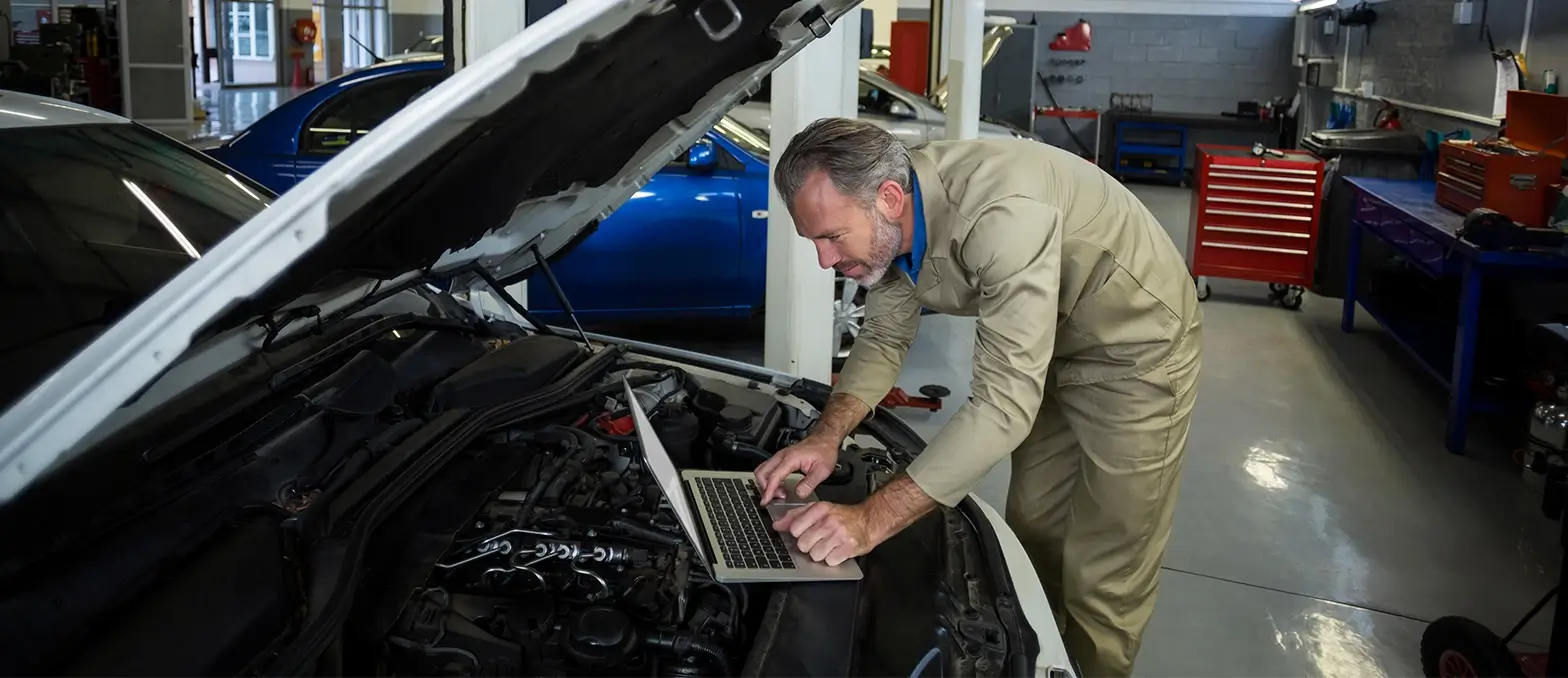Today, the Internet of Things (IoT) is no longer a state of the future. Statista revealed that in terms of numbers, there were about 15.9 billion IoT devices in use worldwide in 2023, projected to nearly double to over 32 billion services by 2030. The exponential growth is a result of connectivity, continued uptake of smart devices, and growing real-time data analytics demand. For example, transport, manufacturing, and healthcare industries are utilizing the IoT to operate more efficiently and provide new services. For instance, the IoT in the healthcare sector, According to Grand View Research the sector will hit 169.99 billion by 2030.
IoT and cloud computing convergence has been key to this expansion. Due to the vast amount of data created by IoT devices, cloud platforms are capable of providing the right level of scalability for data storage and computation. This allows smooth integration and more intelligent decision-making processes. But, due to a pervasive synergy between the Internet of Things and cloud computing, we are witnessing unprecedented growth in innovation across all sorts of industries. In this blog, we will learn how IoT applications can be scaled with the help of cloud computing, the benefits, practical case studies, and major challenges that organizations encounter while implementing such solutions.
Table of Contents
The Basics of IoT and Cloud Computing
A network of interconnected devices and sensors situated to collect, exchange, and analyze real-time data is called the Internet of Things (IoT). These are the smart home gadgets, and industrial machinery, which all likely have sensors, software, and connectivity that allow them to speak with each other without human intervention. IoT is the gap between the physical & digital world and makes smarter environments and actionable insights.
However, cloud computing is a technology that offers us access to computing resources—servers, storage, databases, and software—on demand, usually over the Internet. In doing so, It eliminates the need for businesses to maintain any physical infrastructure, making it a highly scalable and affordable option for storing and running data and applications.
IoT and cloud computing work in combination and are revolutionizing the process and use of data. The volume of data collected through IoT devices increases drastically and must be stored, processed, and retrieved quickly. However, cloud platforms fill the shoes in this regard. The role of the IoT cloud platform is to act as the bridge between IoT devices and advanced data analytics, which will keep this final data in a centralized location to integrate, store, and manage it. These platforms provide scalability, security, and reliability on which most IoT implementations rely. This partnership allows businesses to innovate faster, reduce operational complexities, and focus on delivering value-added services to customers.
How Cloud Computing Plays an Effective Role in Scaling IoT Apps
1. Centralized Data Management
One of the primary roles of cloud computing in scaling IoT applications is centralized data management. IoT devices generate vast amounts of data from diverse sources. This data is collected, stored, and analyzed using a common repository found on a cloud platform. This means no more need for localized servers and businesses can retrieve data from anywhere in the world.
2. Real-Time Processing and Insights
An IoT cloud computing platform is designed to handle real-time data processing and analytics, which are critical for many IoT applications. Whether it’s monitoring patient vitals in healthcare or tracking fleet performance in transportation, real-time insights enable businesses to respond swiftly to changing conditions and make informed decisions.
3. On-Demand Scalability
The elastic nature of cloud computing ensures that businesses can scale their IoT infrastructure up or down based on demand. For example, during peak operational periods, a cloud platform can quickly allocate additional resources to handle increased data loads, preventing downtime and ensuring smooth performance.
4. Enhanced Connectivity
Cloud computing enhances connectivity by acting as a hub for IoT devices to communicate seamlessly with each other. This interconnected environment supports smooth data exchange and enables the creation of comprehensive IoT ecosystems. Platforms like an IoT cloud platform provide APIs and tools for integrating devices, software, and services into a cohesive system.
5. Cost Efficiency
Scaling IoT applications with cloud computing cuts down the cost of investing and maintaining the physical infrastructure. With the pay-as-you-go model, cloud service providers provide businesses the advantage of only using the resources that they want without having to pay for any more than that. That makes this model very good for startups and SMEs who want to start up their IoT project without expecting to pay a lot of upfront cash.
6. Reliability and Security
Reliability and security are critical concerns in IoT applications, especially when scaling involves integrating a large number of devices. Cloud platforms ensure data availability through redundant storage and failover mechanisms, minimizing downtime. They also provide advanced security features, including encryption, multi-factor authentication, and compliance with global standards, making them a trusted choice for IoT scalability.
Benefits of Using the Cloud for Scaling IoT
1. Flexible Resource Management
One of cloud computing’s most significant advantages is its flexibility. An IoT cloud platform allows businesses to adjust their computing and storage resources based on demand dynamically. Whether expanding to accommodate seasonal spikes or reducing capacity during slower periods, this flexibility ensures optimal resource utilization without unnecessary costs.
2. Unified Data Handling
Cloud computing centralizes data collected from IoT devices, enabling businesses to store, process, and analyze it in a single location. This eliminates the complexity of managing disparate data sources and enhances efficiency, allowing for faster decision-making and streamlined operations.
3. Enhanced Interconnectivity
Integrating the Internet of Things and cloud computing fosters seamless communication between devices and platforms. Cloud services enable interconnected ecosystems where data and commands flow effortlessly, even in geographically dispersed setups. This connectivity empowers businesses to scale their IoT networks without geographic limitations.
4. Security at Scale
Scaling IoT often raises security concerns due to the increasing number of devices and data points. Cloud platforms offer robust security features, including data encryption, access controls, and continuous monitoring, to protect IoT ecosystems as they grow. Advanced threat detection ensures that businesses maintain security across their entire network.
5. Streamlined Maintenance
As IoT networks grow, maintaining devices and systems can become daunting. Cloud platforms simplify maintenance through centralized dashboards, automated updates, and remote troubleshooting. This makes scaling operations more manageable and reduces operational overhead.
Use Cases of IoT and Cloud Computing Integration
1. Smart Manufacturing
IoT and cloud computing have changed the manufacturing industry and built smart factories where all operations are controlled in real-time. Machines monitor their operation, performance, usage, assembly line efficiency, and inventory data collected and conserved in the cloud.
For instance, General Electric (GE) applies IoT in machines integrated with cloud computational intelligence, enabling a 20% decrease in the failure rate. The possibility of overseeing and controlling the factory’s production process without being physically present on-site enables manufacturers to optimize performance, reduce unnecessary costs, and increase output.
2. Connected Healthcare
IoT devices, such as wearable monitors and connected medical equipment, generate critical health data processed and stored on cloud platforms. This integration ensures healthcare providers’ secure and real-time access.
A study by Deloitte highlighted that 60% of healthcare organizations using IoT cloud platforms experienced improved patient outcomes through remote monitoring. For instance, smart insulin pumps track blood sugar levels and adjust dosages in real time, with data stored in the cloud for doctors to review remotely. This approach reduces hospital visits and improves the quality of care.
3. Intelligent Transportation Systems
IoT-enabled transportation systems use sensors to monitor vehicle performance, traffic patterns, and fleet locations. Cloud platforms analyze this data to optimize routes, reduce fuel consumption, and improve safety.
In Singapore, IoT and cloud integration have transformed public transport, enabling innovative traffic management systems to reduce congestion by 25%. For logistics companies, IoT-powered fleet tracking systems connected to the cloud provide real-time updates, helping to avoid delays and ensure timely deliveries.
4. Smart Energy Management
IoT devices integrated with cloud platforms are transforming the energy sector by improving efficiency and promoting sustainability. Smart meters, for example, collect energy consumption data, which is analyzed in the cloud to identify usage patterns and recommend optimizations.
The International Energy Agency (IEA) reports that cloud-enabled energy systems reduce power grid outages by 40%. Utility companies use this data to manage peak demand more effectively, integrate renewable energy sources, and provide customers with insights into their energy usage, encouraging conservation.
5. Retail and Smart Stores
IoT devices such as beacons, smart shelves, and RFID are changing the retail landscape in the new age. Data gathered from these devices is then analyzed in the cloud to support real-time inventory updates for the inventories, individualized product recommendations, and the supply chain.
For instance, Walmart adopted IoT sensors and cloud analytics, wherein it can quickly manage the stock of its products, specifically those that are heavily stocked, by using an algorithm that can trigger more inventory restocking. Such kinds of data can also help retailers monitor customer flow to arrange the store layout and customer experience.
6. Disaster Management
For disaster monitoring, IoT sensors are deployed in disaster-prone areas to measure surrounding activity, such as seismic activity, temperature, and river levels. Cloud platforms analyze this data to produce early‐warning alarms and coordinate emergency responses.
Japan has implemented an IoT-powered earthquake detection system that uses cloud analytics to send alerts to residents and shut down high-speed trains automatically. These integrations not only save lives but also minimize damage by enabling quicker responses to disasters.
7. Agricultural IoT
IoT devices in agriculture monitor soil, humidity, weather, and crop conditions. They gather information from these devices and store it in the cloud, processing it to provide farmers with precision farming techniques.
The Food and Agriculture Organization (FAO) states that IoT, with cloud computing power, has boosted crop yields by 30%. For instance, a large wheat farm uses IoT sensors to examine irrigation requirements and automate watering to minimize water usage and optimize production.
8. Logistics and Supply Chain Operations
IoT and cloud computing have streamlined logistics by providing real-time visibility into shipment conditions, inventory levels, and fleet operations. For instance, DHL integrates IoT-enabled sensors with cloud platforms to track package locations and monitor the temperature of sensitive goods like vaccines. This ensures that conditions remain within acceptable limits, improving reliability and reducing spoilage.
According to McKinsey, companies using IoT-enabled logistics systems have seen a 50% reduction in transit delays and inventory costs. Cloud integration further supports predictive analytics to anticipate disruptions and optimize supply chains.
Challenges in Scaling IoT with Cloud Computing
1. Data Latency and Bandwidth Constraints
With IoT devices generating huge amounts of data, they need to be processed in real-time. In transmitting this data to the cloud for analysis and back to the devices, there is latency, which can be an issue with time-sensitive applications, such as autonomous vehicles or remote surgeries. Furthermore, the bandwidth needed for servicing large-scale IoT networks is expensive and subject to congestion, constraining the scalability of cloud-based IoT systems.
2. Security Risks and Data Privacy Concerns
Scaling IoT networks increases the attack surface for cyber threats, making security a top priority. IoT devices often lack robust security features, and transferring sensitive data to the cloud introduces additional vulnerabilities. Despite the security protocols offered by cloud providers, businesses must ensure that the data traveling between IoT devices and the cloud remains protected. Partnering with an IoT development company can help implement advanced security measures to address these challenges.
3. Integration Complexity with Legacy Systems
There are a lot of organizations still running legacy systems that don’t naturally support modern IoT and cloud technologies. However, such reengineering becomes time-consuming and costly. This is where IoT application development services can help bridge this gap, but it’s one of the major hurdles for businesses with outdated infrastructure.
4. Regulatory and Compliance Challenges
IoT systems often operate across multiple regions, each with its data privacy laws and industry regulations. For example, compliance with GDPR in Europe or HIPAA in healthcare adds layers of complexity when scaling IoT systems globally. Ensuring that data storage and processing on the cloud adhere to local regulations is critical but challenging, particularly for industries dealing with sensitive data.
5. Vendor Lock-In and Lack of Interoperability
Choosing a single cloud provider for IoT applications can lead to vendor lock-in, limiting flexibility and future scalability. Additionally, IoT devices and cloud platforms often use proprietary technologies, creating interoperability issues. Businesses may struggle to integrate different IoT devices or switch cloud providers without significant reconfiguration. Open standards and multi-cloud strategies can mitigate these challenges but require careful planning.
How A3Logics Helps in Developing IoT Applications with Cloud Computing
At A3Logics, we offer IoT solutions to enterprises that are reliable, scalable, and suitable for the kind of business. IoT devices have smooth connectivity with cloud platforms, making real-time data analysis, optimal working, and proper decision-making possible. Here’s how we make it happen:
- Tailored Solutions: We create IoT applications according to your company’s needs and goals.
- End-to-End Services: We also organize connectivity and communications to program IoT devices right from device integration to cloud setup.
- Robust Security: Our solutions focus on data protection, device identification, and meeting international norms.
- Expert Team: You can easily hire IoT developers from A3Logics, who can develop cutting-edge and future-proof IoT solutions.
Thus, by leveraging our experience in the Internet of Things and cloud computing, we help businesses drive efficiency, deliver added value, and build a competitive edge.
Conclusion
The integration of IoT and cloud computing has transformed how businesses operate, enabling them to scale efficiently, process data in real-time, and drive innovation. This powerful combination offers flexibility, cost-effectiveness, and enhanced security, making it a cornerstone for modern IoT applications.
Using this technology is no longer something optional for businesses looking to get ahead of their competition. If you’re ready for the most significant benefits of IoT, it’s time to hire IoT developers who can build catered solutions that work with your business objectives. Organizations can learn to make more intelligent systems, offer better customer experiences, and establish a path toward sustainable growth by embracing IoT and cloud-enabled technologies.
FAQs
How do IoT and Cloud computing work together?
The data is collected and transmitted by IoT devices, stored and analyzed in real-time by cloud computing. With that centralized platform, a device can communicate with another and businesses to derive actionable insights from the data. This integration scale is easy to reach and efficient for IoT applications.
How is an IoT device connected to the cloud?
IoT devices communicate with the Cloud using internet protocols such as MQTT, HTTP, or CoAP. Gateways mostly serve as intermediaries that collect data from multiple devices and transmit it back to the cloud. Upon connection, they can send data for processing or to receive commands, allowing for remote control and monitoring.
What is the difference between IoT and normal clouds?
An IoT cloud specifically handles IoT tasks like real-time data processing, device management, and analytics. It supports IoT-specific protocols and enables seamless integration of multiple devices. In contrast, a normal cloud is more general-purpose, focusing on traditional storage and computing tasks without IoT-specific optimizations.
What is edge computing in IoT?
Edge computing doesn’t send all our data to some centralized cloud; it processes data where it was generated—on IoT devices or nearby servers. This reduces latency, speeds processing time, and minimizes bandwidth use. Automotive and industrial automation are particularly useful applications requiring real-time decision-making, such as whether a vehicle has moved to avoid collisions or a laser for detecting multiple parts.





